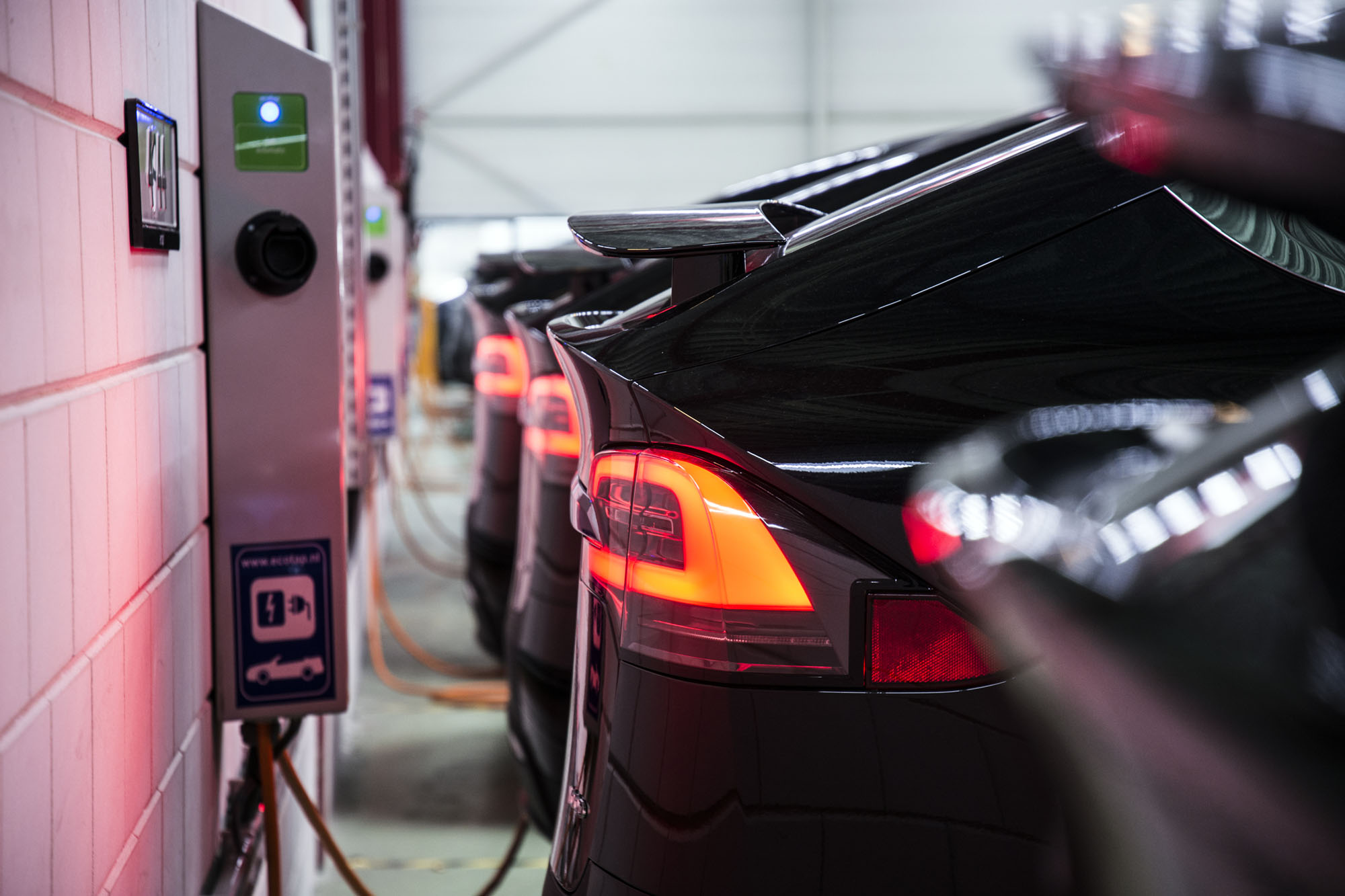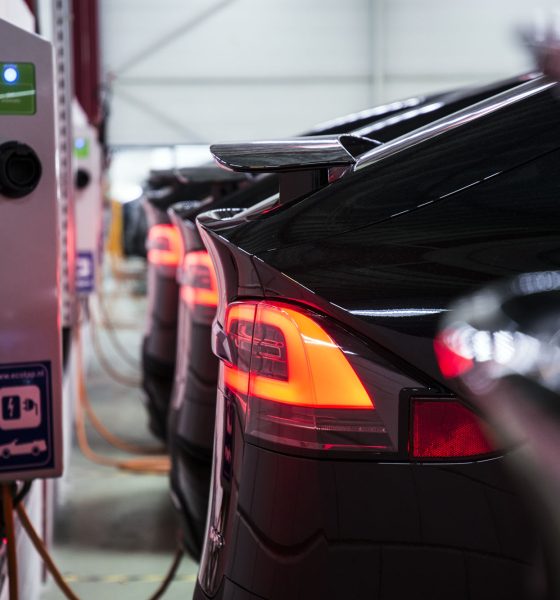

News
Tesla, other carmakers’ EV output could ‘vastly outweigh consumer demand’ by 2030: study
With electric vehicles steadily improving and with large markets such as Europe and China embracing sustainable transport, the market for green cars has seen a notable rise. In 2018 alone, two million electric vehicles were sold globally, and all signs point to further growth ahead. In a recent analysis, research firm Deloitte noted that over the next decade, there would probably be an additional 21 million EVs driving on roads across the globe.
Deloitte expects the adoption of electric vehicles to become more widespread in the coming years. From two million in 2018, the research firm expects 4 million EVs to be sold by 2020. By 2025, Deloitte expects global EV sales to hit 12 million. By 2030, the research firm estimates electric vehicle adoption to rise to 21 million units, with battery-electric vehicles such as Tesla’s Model S, 3, and X accounting for roughly 70% of the global auto market’s total EV sales.
Deloitte’s analysis notes that two notable factors primarily drive this strong EV adoption trend. One, there is a growing demand for well-rounded electric vehicles like the Tesla Model 3. Two, government policies from key markets such as Europe and China are becoming more favorable for EVs and EV-buyers, including inner-city restrictions for gasoline and diesel-powered cars.
While electric cars today are still weighed down by their prices, Deloitte’s research suggests that EVs would likely reach cost parity with gasoline and diesel-powered vehicles by 2024. Supported with government subsidies and augmented by technological advances such as Tesla’s ever-evolving driver-assist Autopilot features, the research firm estimates that cost parity with internal combustion-powered cars could be achieved as early as 2021. Michael Woodward, UK automotive partner at Deloitte, explained the firm’s findings as follows.
“In 2018, we saw global EV sales surpass two million units for the first time; twice those sold in 2017. In the UK, the cost of petrol and diesel vehicle ownership will converge with electric over the next five years. Supported by existing government subsidies and technology advances, this tipping point could be reached as early as 2021. From this point, cost will no longer be a barrier to purchase, and owning an EV will become a realistic, viable option for new buyers,” he said.
While Deloitte’s conclusions invoke an air of optimism for the electric car market, though, the research firm’s UK automotive partner warns that there would likely be a point where supply would exceed the demand for electric vehicles. The firm’s research also warns that the number of new and legacy auto manufacturers entering the EV market over the next years would eventually be “unsustainable.”
“Whilst there is a distinct trend developing in the EV market, the story is not a clear cut one. As manufacturers increase their capacity, our projections suggest that supply will vastly outweigh consumer demand by approximately 14 million units over the next decade. This gearing up of EV production is driving a wide ‘expectation gap’ and manufacturers, both incumbent and new entrants alike, will need to adapt towards this new competitive landscape. Those that can successfully build trust in their brand, ensure a positive customer experience from initial sale through to aftercare, and reflect consumer shifts towards the sharing economy in future business models will successfully navigate this. Equally, continual investment in engineering talent and the formation of partnerships with bespoke battery producers and third-party mechanic networks will also be important.”
In a way, the conclusions drawn by Deloitte are a bit strange, since the firm seems to be suggesting that the global demand for electric cars would roughly peak at 21 million a year. Considering that the overall auto market is far larger than 21 million vehicles per year (Statista estimates that over 80 million cars were sold in 2018 alone), the study appears to be suggesting that the demand for gasoline and diesel-powered vehicles would remain steady long after EVs reach cost parity. This is a pretty liberal assumption, which ignores the idea of car buyers completely committing to electric transportation once they try out a premium EV.
Tesla’s growth and triumphs over the years had all but proved that there is a very real demand for premium electric cars in the market. With the release of potentially disruptive vehicles such as the Model Y SUV, the Tesla pickup truck, and the Tesla Semi, the market’s acceptance of electric cars as a preferred form of transportation would likely be even more pronounced. As more car buyers transition to EVs, it would not be too farfetched to assume that the demand for electric cars could far exceed 21 million vehicles per year long after 2030.

News
Tesla FSD fleet is nearing 7 billion total miles, including 2.5 billion city miles
As can be seen on Tesla’s official FSD webpage, vehicles equipped with the system have now navigated over 6.99 billion miles.

Tesla’s Full Self-Driving (Supervised) fleet is closing in on almost 7 billion total miles driven, as per data posted by the company on its official FSD webpage.
These figures hint at the massive scale of data fueling Tesla’s rapid FSD improvements, which have been quite notable as of late.
FSD mileage milestones
As can be seen on Tesla’s official FSD webpage, vehicles equipped with the system have now navigated over 6.99 billion miles. Tesla owner and avid FSD tester Whole Mars Catalog also shared a screenshot indicating that from the nearly 7 billion miles traveled by the FSD fleet, more than 2.5 billion miles were driven inside cities.
City miles are particularly valuable for complex urban scenarios like unprotected turns, pedestrian interactions, and traffic lights. This is also the difference-maker for FSD, as only complex solutions, such as Waymo’s self-driving taxis, operate similarly on inner-city streets. And even then, incidents such as the San Francisco blackouts have proven challenging for sensor-rich vehicles like Waymos.
Tesla’s data edge
Tesla has a number of advantages in the autonomous vehicle sector, one of which is the size of its fleet and the number of vehicles training FSD on real-world roads. Tesla’s nearly 7 billion FSD miles then allow the company to roll out updates that make its vehicles behave like they are being driven by experienced drivers, even if they are operating on their own.
So notable are Tesla’s improvements to FSD that NVIDIA Director of Robotics Jim Fan, after experiencing FSD v14, noted that the system is the first AI that passes what he described as a “Physical Turing Test.”
“Despite knowing exactly how robot learning works, I still find it magical watching the steering wheel turn by itself. First it feels surreal, next it becomes routine. Then, like the smartphone, taking it away actively hurts. This is how humanity gets rewired and glued to god-like technologies,” Fan wrote in a post on X.
News
Tesla starts showing how FSD will change lives in Europe
Local officials tested the system on narrow country roads and were impressed by FSD’s smooth, human-like driving, with some calling the service a game-changer for everyday life in areas that are far from urban centers.

Tesla has launched Europe’s first public shuttle service using Full Self-Driving (Supervised) in the rural Eifelkreis Bitburg-Prüm region of Germany, demonstrating how the technology can restore independence and mobility for people who struggle with limited transport options.
Local officials tested the system on narrow country roads and were impressed by FSD’s smooth, human-like driving, with some calling the service a game-changer for everyday life in areas that are far from urban centers.
Officials see real impact on rural residents
Arzfeld Mayor Johannes Kuhl and District Administrator Andreas Kruppert personally tested the Tesla shuttle service. This allowed them to see just how well FSD navigated winding lanes and rural roads confidently. Kruppert said, “Autonomous driving sounds like science fiction to many, but we simply see here that it works totally well in rural regions too.” Kuhl, for his part, also noted that FSD “feels like a very experienced driver.”
The pilot complements the area’s “Citizen Bus” program, which provides on-demand rides for elderly residents who can no longer drive themselves. Tesla Europe shared a video of a demonstration of the service, highlighting how FSD gives people their freedom back, even in places where public transport is not as prevalent.
What the Ministry for Economic Affairs and Transport says
Rhineland-Palatinate’s Minister Daniela Schmitt supported the project, praising the collaboration that made this “first of its kind in Europe” possible. As per the ministry, the rural rollout for the service shows FSD’s potential beyond major cities, and it delivers tangible benefits like grocery runs, doctor visits, and social connections for isolated residents.
“Reliable and flexible mobility is especially vital in rural areas. With the launch of a shuttle service using self-driving vehicles (FSD supervised) by Tesla in the Eifelkreis Bitburg-Prüm, an innovative pilot project is now getting underway that complements local community bus services. It is the first project of its kind in Europe.
“The result is a real gain for rural mobility: greater accessibility, more flexibility and tangible benefits for everyday life. A strong signal for innovation, cooperation and future-oriented mobility beyond urban centers,” the ministry wrote in a LinkedIn post.
News
Tesla China quietly posts Robotaxi-related job listing
Tesla China is currently seeking a Low Voltage Electrical Engineer to work on circuit board design for the company’s autonomous vehicles.

Tesla has posted a new job listing in Shanghai explicitly tied to its Robotaxi program, fueling speculation that the company is preparing to launch its dedicated autonomous ride-hailing service in China.
As noted in the listing, Tesla China is currently seeking a Low Voltage Electrical Engineer to work on circuit board design for the company’s autonomous vehicles.
Robotaxi-specific role
The listing, which was shared on social media platform X by industry watcher @tslaming, suggested that Tesla China is looking to fill the role urgently. The job listing itself specifically mentions that the person hired for the role will be working on the Low Voltage Hardware team, which would design the circuit boards that would serve as the nervous system of the Robotaxi.
Key tasks for the role, as indicated in the job listing, include collaboration with PCB layout, firmware, mechanical, program management, and validation teams, among other responsibilities. The role is based in Shanghai.
China Robotaxi launch
China represents a massive potential market for robotaxis, with its dense urban centers and supportive policies in select cities. Tesla has limited permission to roll out FSD in the country, though despite this, its vehicles have been hailed as among the best in the market when it comes to autonomous features. So far, at least, it appears that China supports Tesla’s FSD and Robotaxi rollout.
This was hinted at in November, when Tesla brought the Cybercab to the 8th China International Import Expo (CIIE) in Shanghai, marking the first time that the autonomous two-seater was brought to the Asia-Pacific region. The vehicle, despite not having a release date in China, received a significant amount of interest among the event’s attendees.








